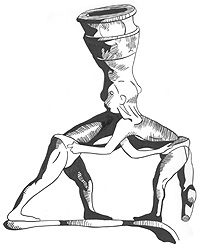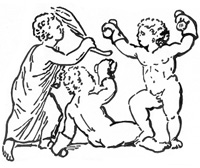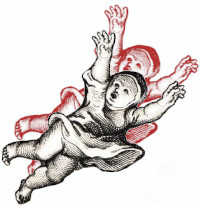In corresponding with A Gent concerning his praise of the Plantation America project—which is not all mine, as I have an editor, various proof readers, 20-odd supporters, a half-dozen correspondents who have sent me primary sources, and now two coauthors, as I have begged Old Dominion help with Bacon’s Rebellion—I feel it is my duty to lay out the uneasy parameters of the question of relative bondage trajectory.
Off the top of my head, which curses my editor to fact-check some dates here, there has been some difficulty decided where to break off the inquiry, when to box it in, etc.
The key problem is the United States census, which has rarely been fully cooperated with since the beginning as so many folk were originally runaways. What census do we use to align with emancipation?
How do we align census figures with laws against trafficking humans into America?
Below are some dates with their importance to the European and African condition.
1585: Irish captives force by English masters to man a fort in the Roanoke area of Virginia.
1609: Forced labor of English poor in Jamestown, including the sale of English boys to Indians, establishes English Youth as the key commodity of Plantation America.
1617: English youth reduced to a scaled commodity of exchange, being weighed against tobacco and sold for this produce that they would be cursed to cultivate.
1619: The chance sale of 20 Africans in Jamestown serves as a cloak behind which will forever be disguised the plight of European youth in Plantation America. These men would become privileged house servants of the elite, then free men and ultimately sire an African American slave owner who would draft legislation calling for slavery for life for runaways and African’s in particular.
1650: Massive export of Irish, English and Scottish slaves after the rise of Cromwell and the introduction to International banking in the British Isles, floods the human labor market and reduces human value.
1671: Of roughly 40,000 Virginians, less than 100 men can be found who worked through their term of service and became freedmen.
1675: Plantation economics in Virginia improved to the point that roughly 2,000 of the 45,000 Virginians were freedmen, that is poor men with no voting rights who had the burden of being armed and capturing runaways and dealing with Indian aggression, which caused the signature powder keg of the 1600s in the form of Bacon’s Rebellion. The violent threat of these men in the face of their subjugation by their masters at the hands of Indian warriors, along with the domination of the economy of the top elite, would literally fuel continual westward expansion away from Plantation Economics into Indian Territory for 200 years.
1685: Large scale importation of African slaves would accelerate flight of freed Euro-Americans from the Plantation Economy.
1775: Industrial slavery in Iron Foundries caused large scale slave breakouts in Maryland.
1776-1783: Feuding between the white Elite fueled large scale urban crime and resulted in municipal ordinances against holding Africans as slaves, as urban slaves were free at night to prey upon non-slave owning citizens.
1787: After attempts at emancipation, slavery is confirmed as the basis for American civic life, but importation of new “immigrants” almost exclusively from Europe, is limited to 1804.
1804: In the wake of the Haitian Rising, which did not begin as slave revolt, but only ended as one, the desire of the Southern Planter, cut-off from cheap imported labor, to use slaves to drive the family farmer and wage earner to extinction, also drives a need to breed massive amounts of African Americans and at the same time treat them with increased cruelty in an attempt to quash rebellion in advance.
1812-14: The War of 1812 and the breaking of the Shawnee-Cherokee-Miami resistance to American expansion, caused a massive loss of Euro-American human property, who were now valued at about 1% of their pre-war redemption if recovered. These events caused a spiral in the importance, scale and cruelty—and ironically caused numerous economic crashes due to decreased productivity—of the African American slavery system. As soon as slavery became almost exclusively the province of the African, slavery lost efficiency in a continual spiral of economic failure.
1865-1868: A switch from African American agricultural slavery to European-American industrial slavery, and the establishment of the penal system as the face of rural slavery in America, in the delusional 14th Amendment, which explicitly licenses the government to enslave any law breaker, even as private companies were empowered to write and enforce their own laws, resulted in the fiction that slavery was over, even as women of all races were bought and sold across the nation by police and pimps, established the current state of delusion in which slavery and forced labor are cloaked under the prosperity gospel hell of failure and just deserts.
All of these above dates, relative emancipation, general emancipation, and shift of conditions, have to be rectified with an uneven body of census figures.
Incubated and marinated in a centuries’ old political and academic fabrication, the American mind mews uncomprehendingly in its atomizing stew.
This evening read your Bondage Trajectory post: "1585: Irish captives force by English masters to man a fort in the Roanoke area of Virginia."
Believe you meant Roanoke Island, North Carolina (first English settlement - Croatan mystery) not Roanoke, VA a couple hundred miles to the NW.
-SC
...
Yes, Sir.
Thanks. I wrote Virginia because Virginia encompassed the Carolinas and Georgia until the mid 1600s.











